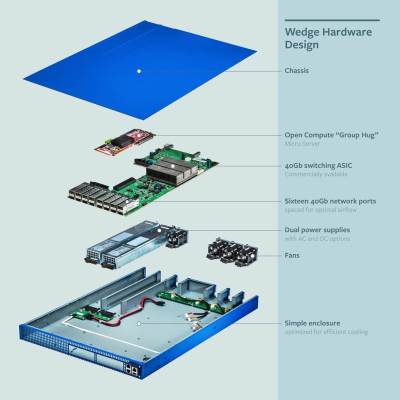Today Facebook announced new modularized top-of-rack networking switch technology and a new Linux OS to control these switches. The company will eventually share this technology as part of its Open Compute Project.
Jay Parikh, Facebook’s VP of Infrastructure Engineering, made the announcement at GigaOm’s Structure Conference in an interview with Derrick Harris.
Parikh says there has been an effort under way for a number of years to disaggregate (or break down into smaller components) the main parts of the Facebook data center. So far, it’s been able to do this with compute, server and storage, but up to this point, the company has been using traditional top-of-rack switches.
Today that changed when Parikh announced a new top-of-rack switch called Wedge. The idea he said was to break the hardware and software into component parts or modules making it easy to change any part of the system to give the company ultimate flexibility to make changes as its needs change over time.
From a configuration standpoint, Wedge is a 40GB switch with 16 slots, expandable to 32, and fits in a standard rack. But IT pros can swap out components or change the way they configure each piece to meet a variety of needs.
Parikh says that what makes Wedge different is the way it’s architected makes it operate more like a server. He says this will allow software developers and hardware engineers much greater flexibility in how they design and call the various components inside the box. FBoss is the new Linux-based OS that will operate Wedge.
“One lingering block has been the network, which has been connected in a conventional manner: Buy this box, put it in the top, plug it in, configure it and go,” Parikh explained.
But Parikh said using that appliance approach was really slowing them down and they have been looking for a solution that provided them more control.
Matt Corddry, director of hardware engineering at Facebook, said that by breaking this down into component parts gives their software developers much greater flexibility to manipulate the different pieces of hardware programmatically in ways that just weren’t possible in the old fixed-appliance kind of approach where the hardware was just a black box.
What’s more, hardware engineers can swap pieces in and out of the chassis to meet their needs.
Corddry says for a company like Facebook, which has such a wide variety of needs from its network — whether it’s the main Facebook app, moving pictures with Instagram or chat with Facebook Messenger (and whatever comes down the road later) — this approach just gives them tremendous flexibility to configure the different pieces in the network, including the top-of-rack switch to meet their changing requirements.
Corddry told me that the company doesn’t yet have a date set to release this new switch to open source, but it will continue to work on it and today’s announcement was the beginning of a larger conversation with the community at large.
As Prikh said, Facebook will welcome the input when it comes. He believes if the community can make it better, cheaper or faster, then they will use that design. The company isn’t wedded specifically to its design, but at the same time, it needs to run its business, solve its internal problems and continue to build flexibility into its own data center even as it shares with the Open Compute Project.
